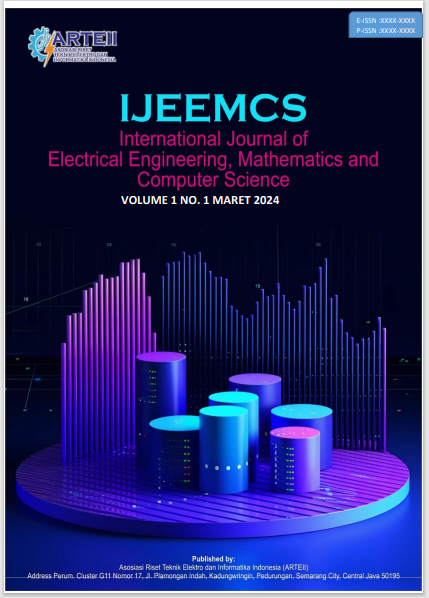Mathematical Modeling of Wireless Sensor Networks for Optimized Energy Consumption
DOI:
https://doi.org/10.62951/ijeemcs.v1i1.69Keywords:
Mathematical modeling, wireless sensor networks, energy consumption, optimization, network lifespan, data transmissionAbstract
Energy efficiency is a critical concern in wireless sensor networks (WSNs) due to the limited power resources available in sensor nodes. Prolonging network lifespan while ensuring reliable data transmission is essential for successful deployment in various applications, such as environmental monitoring, military operations, and industrial automation. This paper presents a mathematical model designed to optimize energy consumption across various nodes in WSNs. By implementing simulations and analyzing data from these models, the study demonstrates significant improvements in extending network lifespan while maintaining reliable data throughput. The findings contribute valuable insights into energy management for large-scale sensor deployments.
References
Abbasi, A. A., & Younis, M. (2007). A survey on clustering algorithms for wireless sensor networks. Computer Communications.
Akyildiz, I. F., Su, W., Sankarasubramaniam, Y., & Cayirci, E. (2002). A survey on sensor networks. IEEE Communications Magazine.
Al-Karaki, J. N., & Kamal, A. E. (2004). Routing techniques in wireless sensor networks: a survey. IEEE Wireless Communications.
Boukerche, A., et al. (2008). Energy-aware routing in wireless sensor networks. Mobile Networks and Applications.
Heinzelman, W. B., Kulik, J., & Balakrishnan, H. (1999). Adaptive protocols for information dissemination in wireless sensor networks. Proceedings of the 5th Annual ACM/IEEE International Conference on Mobile Computing and Networking.
Heinzelman, W. R., Chandrakasan, A., & Balakrishnan, H. (2000). Energy-efficient communication protocol for wireless microsensor networks. Proceedings of the 33rd Hawaii International Conference on System Sciences.
Jain, R., & Mahajan, S. (2013). An optimized approach for efficient energy management in wireless sensor networks. IEEE Journal on Selected Areas in Communications.
Lindsey, S., Raghavendra, C., & Sivalingam, K. M. (2002). Data gathering algorithms in sensor networks using energy metrics. IEEE Transactions on Parallel and Distributed Systems.
Rabaey, J. M., et al. (2000). PicoRadio supports ad hoc ultra-low power wireless networking. IEEE Computer.
Schurgers, C., & Srivastava, M. B. (2001). Energy efficient routing in wireless sensor networks. IEEE MILCOM.
Sharma, N., & Sharma, D. (2019). Mathematical Modeling for Wireless Sensor Network Optimization. International Journal of Electronics and Telecommunications.
Ye, F., Luo, H., Cheng, J., Lu, S., & Zhang, L. (2002). A two-tier data dissemination model for large-scale wireless sensor networks. Proceedings of the 8th Annual International Conference on Mobile Computing and Networking.
Younis, M., & Fahmy, S. (2004). Distributed clustering in ad-hoc sensor networks: A hybrid, energy-efficient approach. Proceedings of IEEE INFOCOM.
Yu, L., & Chong, P. H. J. (2005). A survey of clustering schemes for mobile ad hoc networks. IEEE Communications Surveys & Tutorials.
Yu, Y., Prasanna, V. K., & Krishnamachari, B. (2006). Energy minimization for real-time data gathering in wireless sensor networks. IEEE Transactions on Wireless Communications.
Downloads
Published
How to Cite
Issue
Section
License
Copyright (c) 2024 International Journal of Electrical Engineering, Mathematics and Computer Science

This work is licensed under a Creative Commons Attribution-ShareAlike 4.0 International License.





